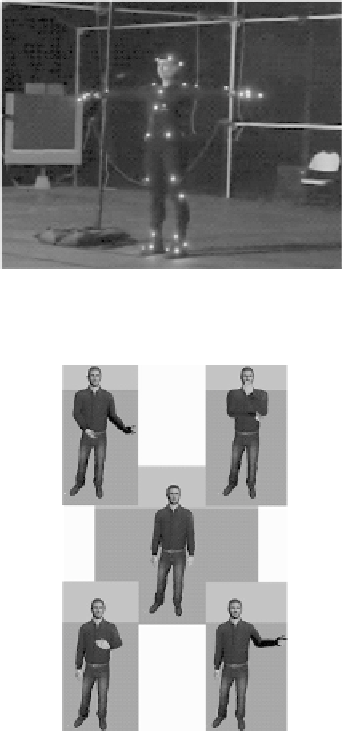Graphics Reference
In-Depth Information
Figure 1.
An actor using an LED-based motion capture suit [PhaseSpace]. In this session, the
body motion is being captured, but not the facial performance or audio/utterance.
(Color image of this fi gure appears in the color plate section at the end of the topic.)
Figure 2.
A hub-and-spoke gesture architecture. An underlying idle pose is created (center
character), from which a set of gestures can be played. This allows individual gestures to
be used for different utterances. Note that a different set of gestures must be generated for
each underlying pose, which can vary from standing, to sitting, to standing with various
hand poses and body lean.
(Color image of this fi gure appears in the color plate section at the end of the topic.)
2.2 Full performance architectures
The highest level of quality can be obtained by simultaneously capturing
both the utterance and the gesture. Thus, a performer will act out an
utterance in combination with its associated body movements, including
gestures. This performance will then be replayed in its entirety on a
virtual human. The advantage to this approach is that the virtual human
will be able to faithfully replay the human performance, notwithstanding
the retargeting necessary to fi t the captured performance onto the virtual

Search WWH ::

Custom Search